1976 - The first year
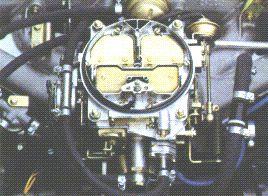 |
| Solex 4A1 in 630 CS |
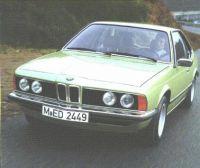 |
| 1976 633 CSi |
The new 6-series coupe, coded E24, was introduced to the press in March 1976, the location was Marbella, Spain. The official introduction was made later at the Geneva show.
Initially there where two models available, 630 CS and 633 CSi. Top of the line was the 633 CSi. It had a six cylinder 3210cc fuel injected engine producing 200bhp at 5500 rpm.
The 630 CS had a 2986cc six cylinder engine with a Solex 4A1 carburetor developing 184bhp at 5800 rpm.
Standard transmission on both models was a 4-speed Getrag 262/9 gearbox with a final drive ratio of 3.45:1 for the 630 CS and 3.25:1 for the 633 CSi. Optional was a 3 gear ZF HP-22 auto transmission.
|
The 1976 3210cc engine in 633 CSi
|
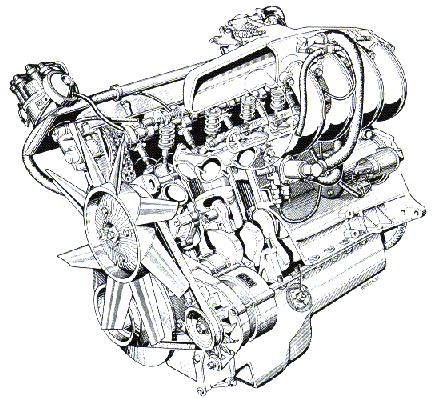 |
|
The 1976 2986cc engine in 630 CS
|
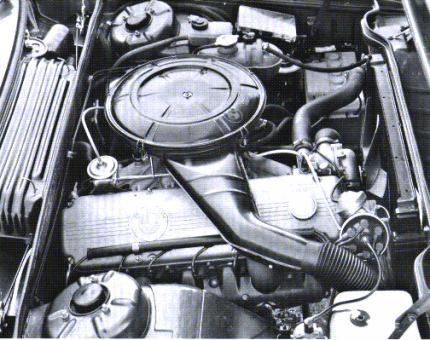 |
|
|
 |
| A classic from day one, the 1976 633 CSi. (Note that rearview mirror on passenger side where option) | |
Suspension
 The suspension was a heritage from the 5-series (E12) but refined for even better performance, for example stiffer shock absorbers and lowered springs.
The suspension was a heritage from the 5-series (E12) but refined for even better performance, for example stiffer shock absorbers and lowered springs.
Standard tyres where 195/70 VR radials mounted on 6Jx14 H2 alloy wheels. A popular option was the wider BBS-Mahle 7Jx14 alloys.
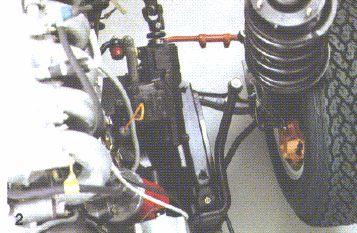 |
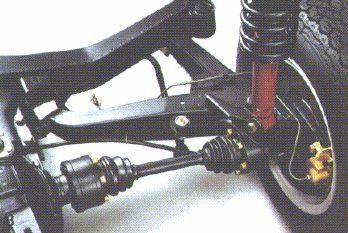 |
 |
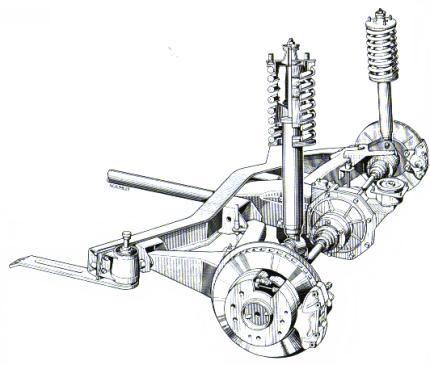 |
|
1976-81 6 series front suspension MacPherson strut |
1976-81 6 series rear suspension 272mm (10.7 inch) ventilated rear disc brakes |
Interior
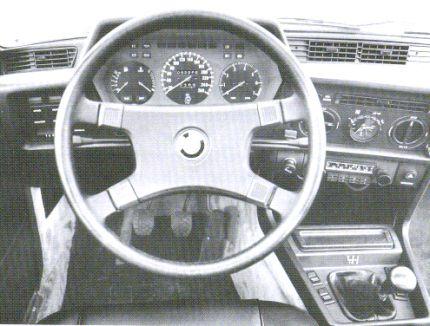
The cockpit introduced around 1972 in other BMW models was developed even more and the result was a cabin that set a new standard to ergonomy, comfort and exclusivity.
One of the highlights in the 6 series cabin was a test panel with 7 green lights showing the status of engine oil level, brake fluid level, brake lights, brake pad wear, cooling water level, screen washer level and rear (tail) lights.
The concept of the test panel, a.k.a. Check control, has been widely used in other BMW models ever since.
 A status check is performed by pressing the TEST button. If any of the following test functions fail, the light for that particular test will not illuminate.
A status check is performed by pressing the TEST button. If any of the following test functions fail, the light for that particular test will not illuminate.
- Engine oil level
- Brake fluid level
- Brake lights
- Brake pad wear indicator
- Cooling water level
- Screen washer level
- Tail lights
The system is continously monitoring the above functions and will immediately inform the driver of a failure. Not a big deal you may think, but remember this was back in 1976 !

Standard upholstery was a combination of leather and velour, but all leather seats was a popular option, it was available in three colors, beige, blue and black.

This is one of the best and most comfortable rear seats ever seen in a coupe. It has a center fold-down armrest, power windows and belt locks integrated in the middle section. The picture also shows the optional rear seat head restrain.
Three-zone control
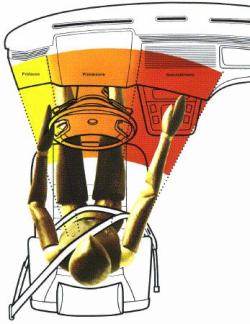
The advanced cockpit introduced a new principle called Three-zone control that used the bio-mechanical fact that all driver-actions can be divided into three separate functional groups.
Test zone, on the drivers left side, keeps the driver informed of the operational status of important functions such as engine fluids, lights in front and rear, brake lining wear and level of brake fluid.
The primary zone, directly in front of the driver, with important controls and instruments.
The third zone, called the secondary zone, contains the comfort controls.
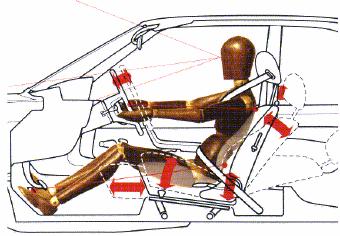
The drivers seat allows adjustment of both the angle and height of the entire seat. The steering column is also adjustable.
Safety
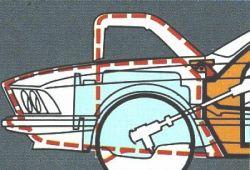
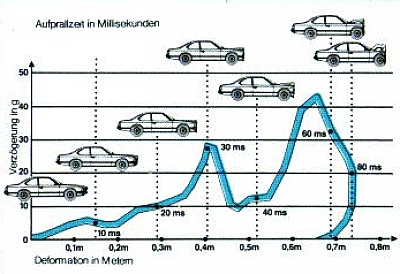
BMW developed something called safety BMW Life Saving System, which is a programmed deformation system that will absorb the bunt of the impact and help minimize human injury. This system was a key factor when BMW developed the 6-series coupe.
The built-in programmed deformation system, called BMW Life Saving System, is designed to absorb the energy during a crash. The steel passenger safety cell has specially constructed roof pillars, integrated roll-bars, cross-struts in the instrument panel and behind the rear seat and strong longitudal struts.
The hood will fold on impact, leaving the windshield intact. Rigid Drive shaft tunnel and instrument panel prevent the engine and the gearbox from penetrating the interior. A collapsable telescope steering wheel column is placed outside crush zone.
Crush testing
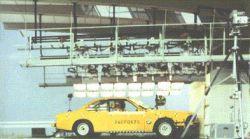
A theoretical design is nothing worth unless proven under real circumstances. BMW put a lot of time and effort crush testing the 6 series coupe.
Front crush test, notice the high-speed camera in the right corner.
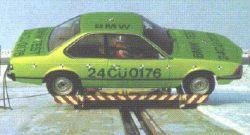 |
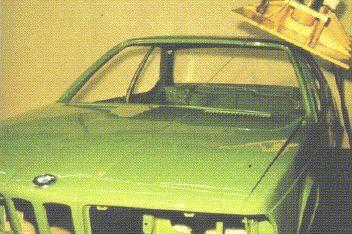 |
| Roll test under snowy conditions. | Another roof massacre, testing how much load the roof will take before it break. |
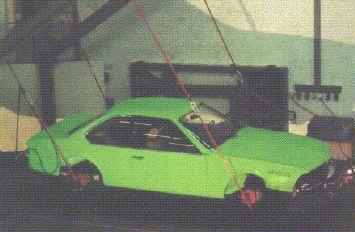 |
 |
| This swing will test the strength of the bumpers. | A hydraulic press testing the strength of the doors. |
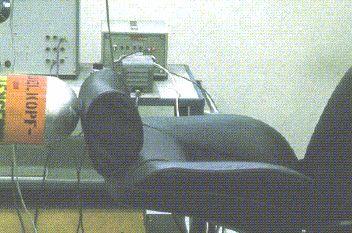 |
 |
| Test for the front seat head restraints. | Pendulum swing testing the instrument panel. |
 |
|
| Testing the seatbelt anchorage points. |
630 CSi - The American model
None of the above models where available in the USA, due to more restricted federal emission laws. Instead they had their own model called 630 CSi. It had the same injected 3.0 litre engine as the 530i four door saloon. This engine had a slightly lower power output compared to the carburated European 630 CS, 176bhp at 5500rpm. One of the major reasons for the lower power output was because it had lower compression ratio, 8.0:1 compared to 9.0:1 for the European 630 CS.
|
1976 630 CSi US version
|
 |
| Unfortunately I don't have a picture of a 1976 630 CSi (yet), above is a picture of a 1979 633 CSi that looked about the same except for the rubber strips around the rear bumper. Notice the large front and rear bumper typical for US cars. | |
Production numbers for 1976
| Model | Units | Total for model | Total all models |
| 630 CS | 1158 | 1665 | 4933 |
| 630 CS A | 507 | ||
| 630 CSi USA | 214 | 410 | |
| 630 CSi A USA | 196 | ||
| 633 CSi | 2125 | 2858 | |
| 633 CSi A | 542 | ||
| 633 CSi RHD | 112 | ||
| 633 CSi A RHD | 79 |

